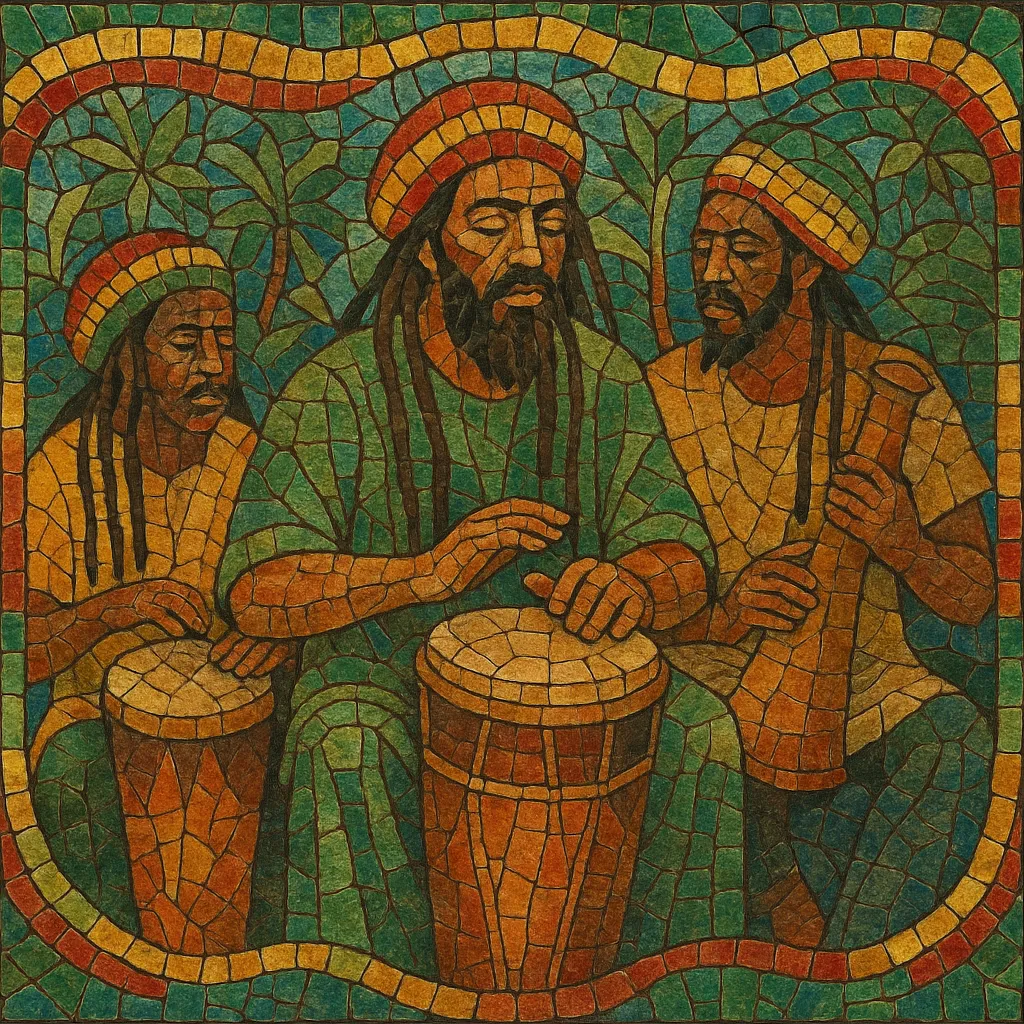Nyahbinghi (also spelled Nyabinghi) is the sacred ceremonial music of the Rastafari movement, centered on communal drumming, chant, and prayer. It features a three-drum ensemble—the bass ("thunder"), funde, and repeater ("akete")—that creates an earthy, heartbeat-like pulse supporting call-and-response psalmody and biblical chants.
Rooted in Afro-Jamaican ritual drumming (e.g., Burru, Kumina) and the early Rastafari communities of the 1930s–40s, Nyahbinghi gatherings ("binghi" or "grounation") serve as spiritual assemblies rather than entertainment. The music is slow to moderate in tempo, deeply cyclical, and intentionally trance-inducing, emphasizing devotion to Jah, livity, and repatriation themes. Its rhythms and chant tradition profoundly shaped ska, rocksteady, and reggae—especially the one‑drop feel in roots reggae.
The Nyahbinghi style emerged alongside the birth of Rastafari in Jamaica in the 1930s, especially around early communities such as Leonard Howell’s Pinnacle. Its rhythmic language draws from Afro-Jamaican ritual drumming traditions (notably Burru and Kumina), filtered through Rastafari theology and communal practice. By the 1940s–50s, drum ensembles accompanying Rastafari gatherings had solidified into the canonical trio: bass ("thunder"), funde, and repeater ("akete").
Count Ossie, a pivotal drummer and bandleader from the Wareika Hills, helped codify the idiom and introduced Nyahbinghi into recorded Jamaican music. His collaborations (e.g., the Folkes Brothers’ “Oh Carolina,” 1959/60) brought ceremonial drumming to popular ears. In the late 1960s–1970s, ensembles like Count Ossie & The Mystic Revelation of Rastafari and Ras Michael & The Sons of Negus issued landmark albums that placed drum-and-chant center stage, sometimes alongside horns and jazz harmony.
Nyahbinghi is inseparable from Rastafari practice: gatherings ("binghi" or "grounation") mark holy days, feature prayer, reasoning, and extended chant cycles, and reaffirm community bonds. The 1966 visit of Haile Selassie I to Jamaica energized the movement and increased the visibility of its music and rites.
The heartbeat pulse, offbeat funde, and improvising repeater strongly influenced ska, rocksteady, and especially roots reggae’s one‑drop. Artists like Bob Marley & The Wailers occasionally incorporated Nyahbinghi textures (e.g., “Rastaman Chant”), and the idiom remains a touchstone for roots consciousness. Today, the style continues as a living ceremonial tradition and a foundational rhythmic vocabulary across reggae and beyond.


